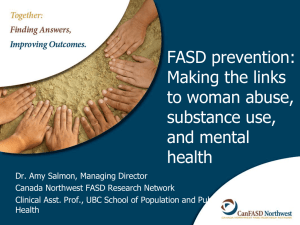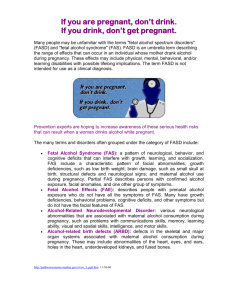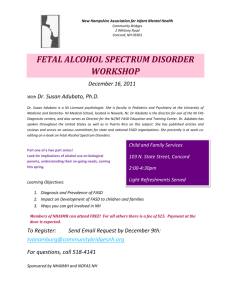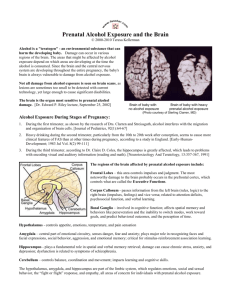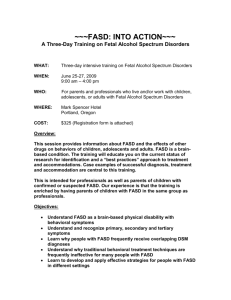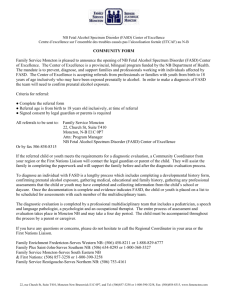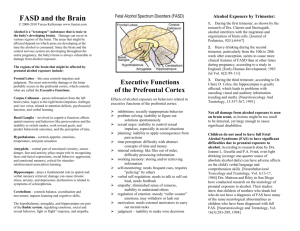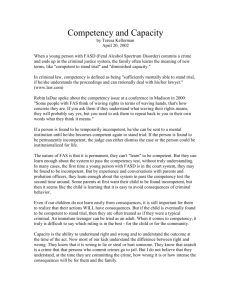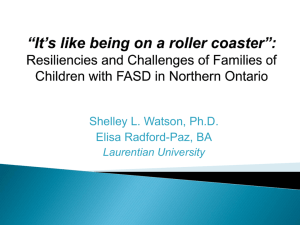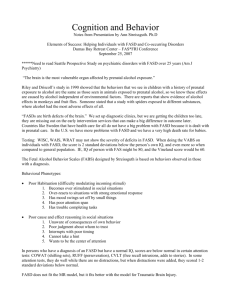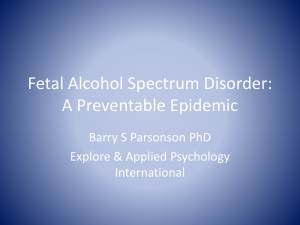Diane Black
advertisement
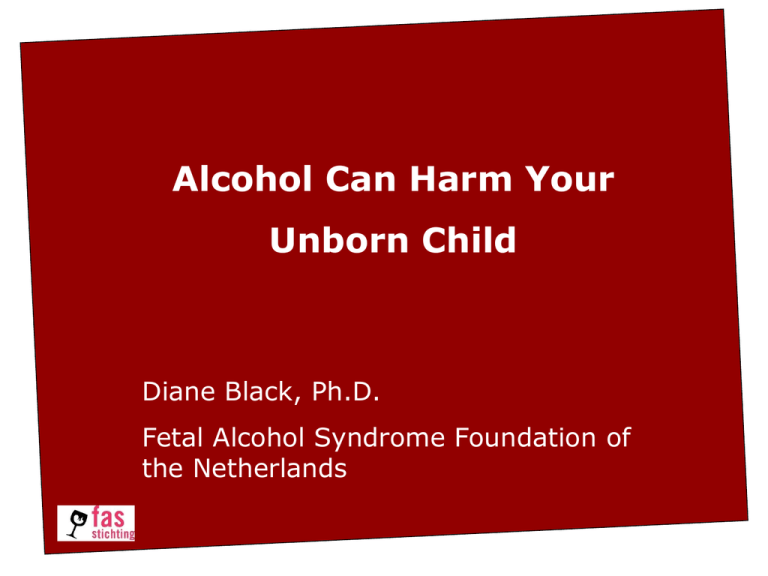
Alcohol Can Harm Your Unborn Child Diane Black, Ph.D. Fetal Alcohol Syndrome Foundation of the Netherlands No amount of alcohol is safe during pregnancy Reduces fertility Increases risk of miscarriage Birth defects Brain damage learning disorders and behavioral disorders Long term: Unemployment Mental illness Criminality FASD: Fetal Alcohol Spectrum Disorder F A S D FAS FAE ARND pFAS ARBD FAS: Fetal Alcohol Syndrome FAE: Fetal Alcohol Effects ARND: Alcohol Related Neurodevelopmental Disorder pFAS: partial FAS ARBD: Alcohol Related Birth Defects Study--Child Behavior Checklist Acts young for age Argues a lot Can't sit still, restless, hyperactive Cruelty, bullying, or meanness to others Disobedient at home Doesn't show guilt after misbehaving Can't concentrate or poor attention Impulsive or acts without thinking Lying or cheating Showing off or clowning Steals from home Steals outside Nash et al.(Arch Womens Mental Health, 2006) Long term outcome Mental illness >90% Early school leavers 60% Trouble with the law 60% Institutionalization (psychiatric, drugs- or alcohol addiction treatment, prison) 50% Inappropriate sexual behavior 50% Alcohol or drug addiction 30% Dependent living 80% of those over age 21 Streissguth et al. (CDC, 1996) Support parents Prevention Doctor, midwife Foster care Parents School Researchers Child with FAS Professionals Doctor Psychologist Social worker Dietician Special education teachers Physical therapy Play therapy Speech therapy Adult with FAS Professionals Supervised living and working Judges Prison workers Mental health care workers Drug and alcohol addiction 7 Financial cost of FASD Canada (Stade et al. 2009) 1% of live births has FASD Estimated costs included: Medical, educational, social services, loss of parent’s productivity (time off for doctor visits) Did not include loss of productivity of adults with FAS Did not account for parents who quit work to care for child(ren) with FASD Total annual costs per person with FASD: $ 21, 642 Total annual costs for Canada for FASD: $ 5.3 billion Many babies in Europe are prenatally exposed to alcohol Netherlands: 35-50% of pregnant women drink (Health Council of the Netherlands) Spain: 45% of babies in Barcelona heavily exposed (Garcia-Algar, 2008) Ireland: 63% of women drink during pregnancy (Coombe Women's Hospital, Dublin) Prevalence FASD Young school children in the US: 20 to 50 per thousand FASD (May et al., 2009). 6-year-olds in Lazio region of Italy: 20 to 40 per thousand FASD (May et al., 2006). School children in Croatia: 40 per thousand FASD (Petković & Barisić, 2010). What can Europe do? (1) – Measure the problem Conduct active case-ascertainment studies of prevalence in each country. – Prevention Develop clear guidelines based on best scientific evidence. Make sure that the info gets to professionals (training, literature). Make sure that the info gets to pregnant women (via doctors and midwives, direct public outreach such as tv, radio, labels on bottles). 11 What can governments do? (2) – Support of people with FASD Support research into best practices in education, medical care of people with FASD Train professionals (health-care, justice, education) to recognize and manage FASD Provide adapted special education, supervised living and work environments for adults with FAS. 12 More information: www.eufasd.org
